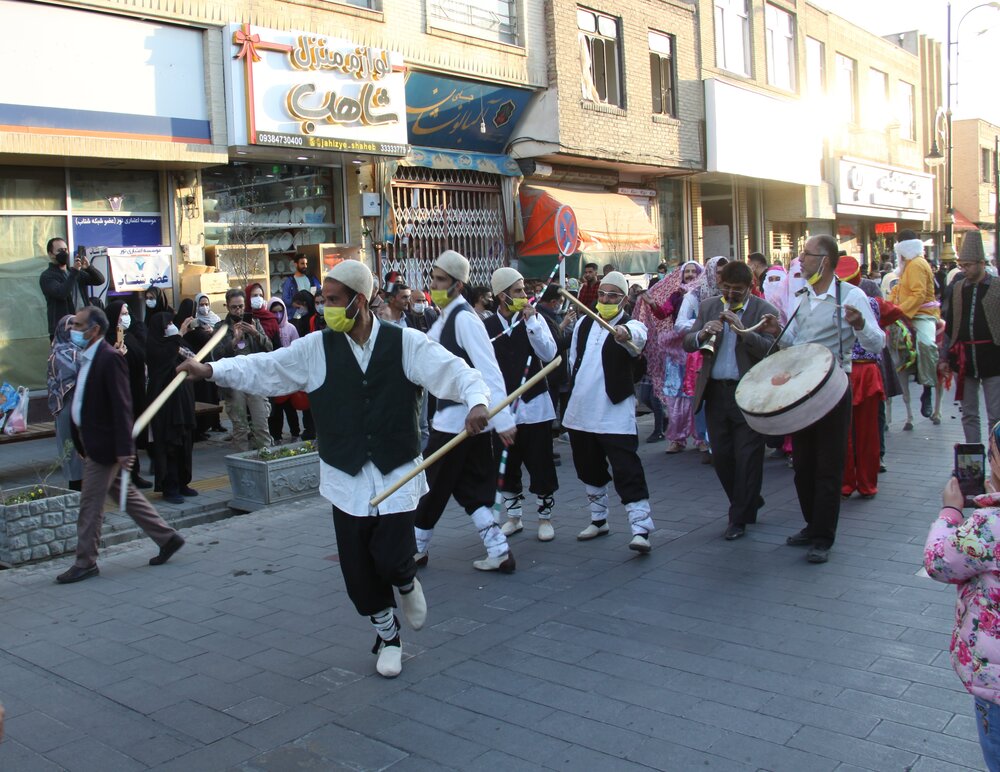11 cultural heritage elements in Semnan added to national list

TEHRAN – A selection of eleven cultural elements, which are traditionally practiced in Semnan province, have been added to the National Intangible Cultural Heritage list.
The Ministry of Cultural Heritage, Tourism and Handicrafts on Thursday announced the inscriptions in an official document it submitted to the governor-general of the north-central province, CHTN reported on Sunday.
Several religious rituals, skills of making local thick stews, an indigenous dance, and an ancient strategy for water management were amongst entrees to the prestigious list.
According to available data compiled by the Ministry of Cultural Heritage, Tourism and Handicrafts, some 2,000 elements have been registered on Iran’s national list of intangible cultural heritage.
“So far, about two thousand intangible cultural elements have been registered in the country,” the tourism minister Ezzatollah Zarghami said earlier in March.
“Intangible cultural heritage such as culture, religion, and rituals are of very high importance as they shape the identity of any nation,” Zarghami said.
In addition, 17 Iranian elements have been registered in UNESCO’s list of the Intangible Cultural Heritage of Humanity. Among Iran’s entries to the prestigious list is Radif of Iranian music; traditional skills of carpet weaving in Kashan; Music of the Bakhshis of Khorasan; Naqqali, Iranian dramatic story-telling; traditional skills of building and sailing Iranian Lenj boats in the Persian Gulf; and traditional skills of crafting and playing Dotar.
Furthermore, the ancient country seeks to register five intangible elements on UNESCO’s list of Intangible Cultural Heritage of Humanity in near future. They are ancient festivities of Mehregan and Yalda, crafting and playing [the stringed instrument of] the Oud, traditional craft of silk spinning, and Turkmen Duzi (a kind of traditional textile being practiced by Iranian Turkman tribes).
Yalda (the birth of a new sun), which is also called Yalda Night, is celebrated on the eve of the winter solstice, which falls on the last day of Azar (the last month of autumn in the Iranian calendar year). On that graceful night, the winter chill is vanquished and the warmth of love embraces the entire family. It’s a time for pleasant family reunions that entails laughter, merriment, and good cheer. According to UNESCO, Yalda ceremonies, in the best way, point to cultural diversity and human creativity, especially when one considers the wide range of the communities that celebrate it.
Mehregan celebration, which falls on the 196th day of the Iranian calendar year usually equals October 2 in the Gregorian calendar, brings together clusters of Iranian Zoroastrians to hold reunions in celebration of Mithra, an ancient goddess of friendship, affection, and love. A key feature of the event is large spreads in purple laden with various ingredients, dishes, and elements each on behalf of a particular belief. Fruits, vegetables, dried nuts, sweets, rosewater, grilled lamb meat, lotus seeds, silver coins, and a scale are typically placed, the latter symbolizes autumnal equinox.
The oud is a pear-shaped stringed instrument frequently used in Persian and Middle Eastern music whose construction is similar to that of the lute. It was thought that this musical instrument was invented by nomad tribes since it was light and mobile. Some believe it originated in the Caucasus region, other sources report more western regions as a point of origin. Some findings show an early elliptical design of Oud found in the ruins of Shush, Iran. Some experts theorize that a priest is shown to be playing it in that depiction.
The Islamic Republic expects to reap a bonanza from its numerous tourist spots such as bazaars, museums, mosques, bridges, bathhouses, madrasas, mausoleums, churches, towers, and mansions, of which 26 are inscribed on the UNESCO World Heritage list.
AFM
